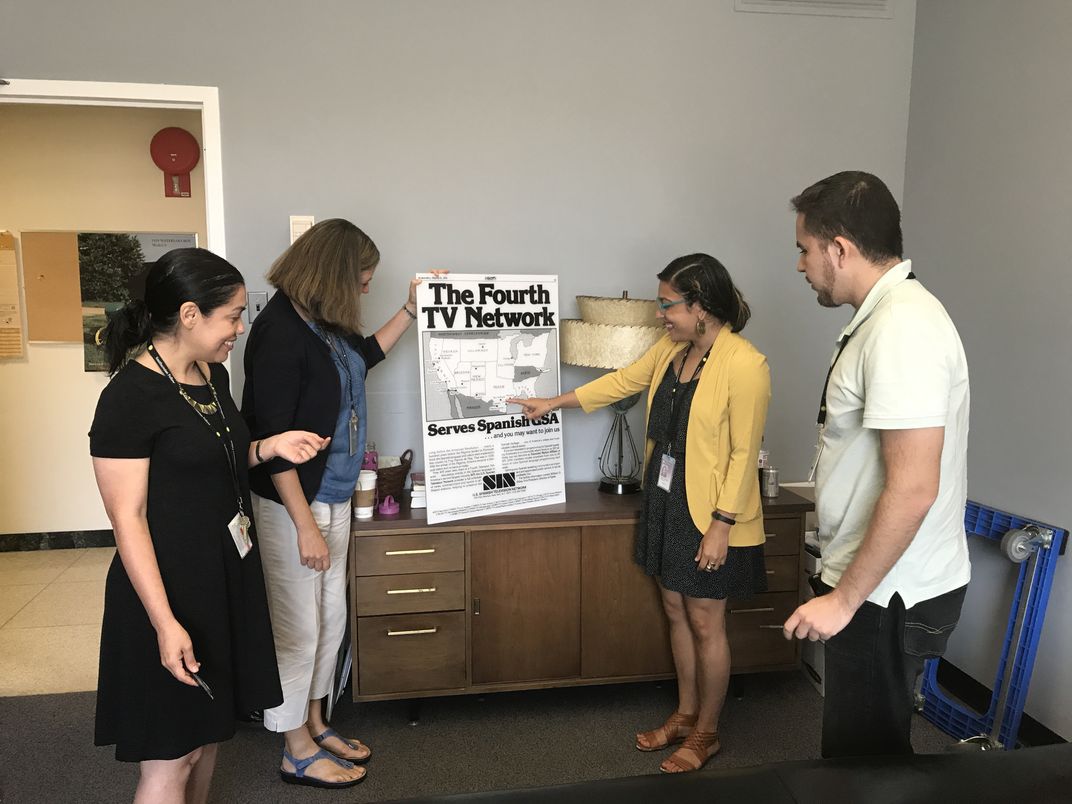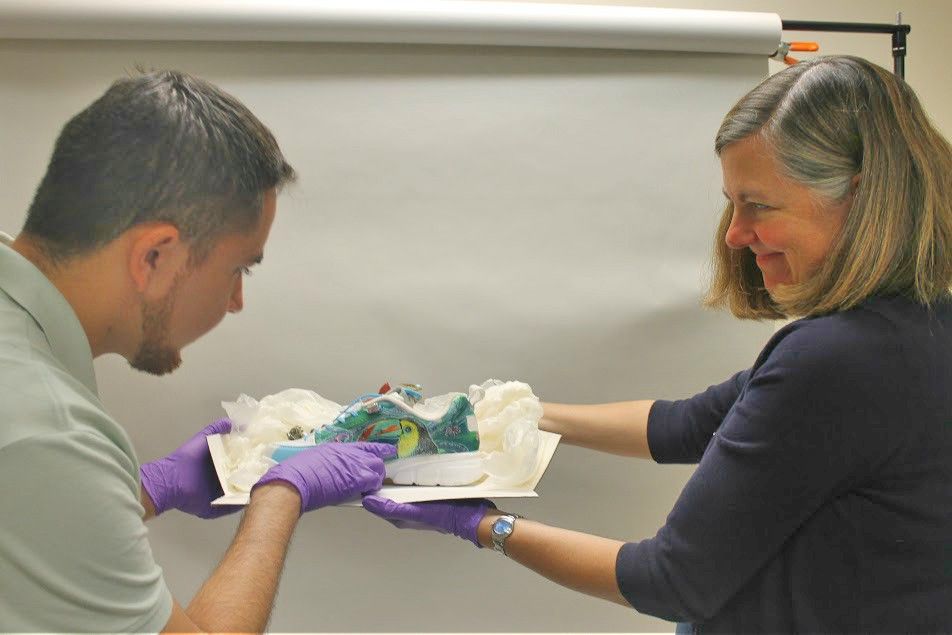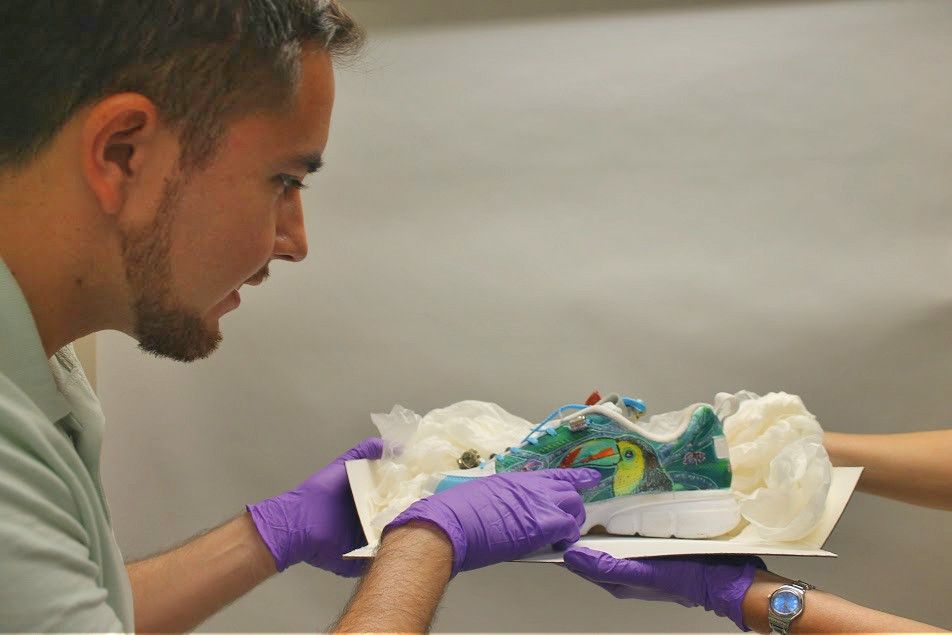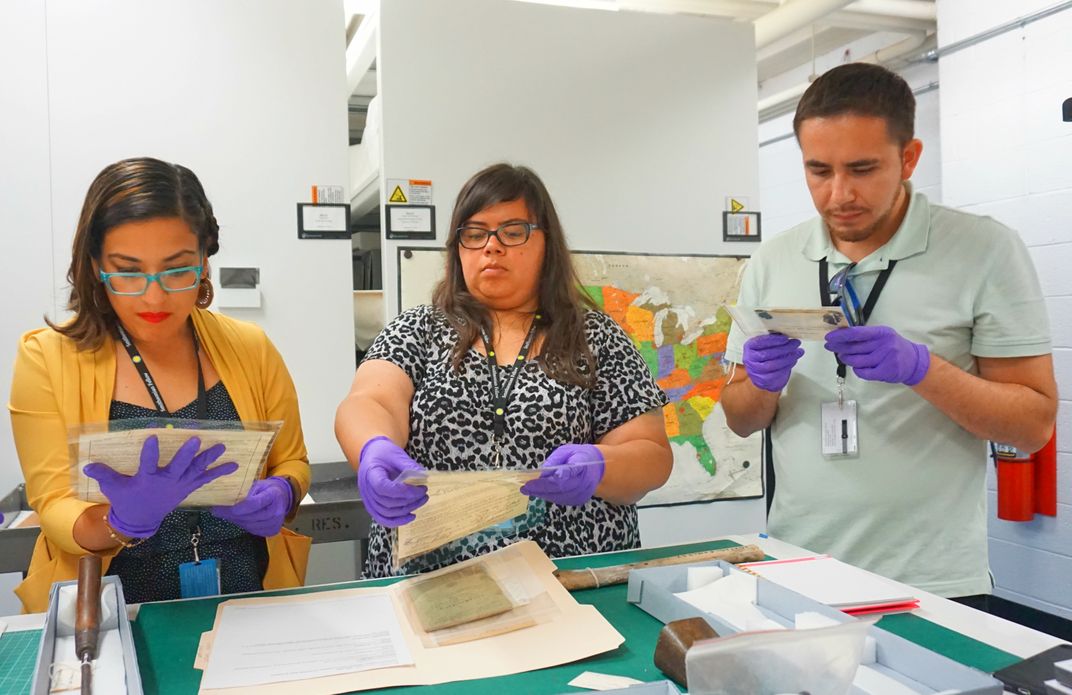NATIONAL MUSEUM OF THE AMERICAN LATINO
Francisco Parra Gets Hands-On With Spanish-Language TV and Radio Archives
/https://tf-cmsv2-smithsonianmag-media.s3.amazonaws.com/blogging/featured/File_1.jpeg)
My time in the Smithsonian Latino Center’s Latino Museum Studies Program (LMSP) was one of the most significant experiences I have had in my doctoral studies. As a graduate student, a great deal of the work I must accomplish – research, reading, writing – is often done on an individual level, which can induce a state of isolation at times. Despite the archival-focused nature of most history dissertations, my study into the development of Spanish-language media in Los Angeles requires me to look beyond the limited institutional archival holdings that relate to this topic and instead engage persons involved with these media outlets as well as to look for a variety of objects that can help me piece together the story I am trying to retell.
Building upon the skills I have honed during my graduate program, the LMSP has allowed me to not only engage with the material objects and archival holdings related to Spanish-language broadcasting held at the National Museum of American History (NMAH) but to also build strong connections with distinguished historians and NMAH curators Kathleen Franz and Mireya Loza. Working with Drs. Franz and Loza I have broadened my understanding of what I am researching by exploring the different archival objects they have collected for the NMAH’s “Spanish-Language Broadcasting Collection” which covers a wide range of topics, personalities, and communities ranging from the humble origins of Spanish-language television at KCOR-TV (later KWEX-TV) in San Antonio, Texas (one of the precursors for the Univision media leviathan) to the personal recollections of Puerto Rican theater, movie, and telenovela actress Gilda Mirós. In this point in my research I have become aware of the dearth and difficulty of finding extant primary documents from Spanish-language television and radio stations from the early years of these industries. The ephemeral nature of broadcast media also complicates the ability of researchers to reconstruct historical narratives and provide analysis on these broadcasts’ contents. Through their resources at NMAH, Drs. Franz and Loza have made important strides in gathering a growing collection of oral histories and artifacts pertinent to the story of la televisión en español en los Estados Unidos.
During the summer I wrote finding aids for items within this collection, including one for Ms. Miros and another for the popular 1985 Telemundo telenovela Tainairí. Part of my responsibilities also included transcribing an oral history interview with an important figure in the early history of KMEX-TV Channel 34, the first Spanish-language TV station in Los Angeles. Working with these documents and objects is exciting because they are pieces of a greater narrative that still must be retold and studied by scholars. In the case of Gilda Miros’s career, it is exciting to historicize her trajectory as a Puerto Riqueña in telenovelas, journalism, the stage and even the big screen in her appearances in Nuyorican and Mexican films in the 1960s (the latter of which included appearances in films from the waning years of Mexican Cinema’s golden age with her role in the 1967 movie El Santo Contra la Invasión de los Marcianos (El Santo vs. The Martian Invasion). In my work with Tainairí I consulted NMAH’s growing collection on documents related to Telemundo to describe this successful 1985 telenovela produced in the network’s founding station, WKAQ-TV in San Juan, Puerto Rico. Starring Von Marie Mendez and Juan Ferrara in a series produced by Diomara Ulloa and directed by playwright Dean Zayas, Tainairí is a historical fiction telenovela which explored the struggle for abolition in late colonial Puerto Rico and examined race, gender, sexuality, and class. Tainairí is memorable as well for being one of the last great telenovelas produced by Telemundo before the rise of the network on the continental U.S. after 1987 and the ascendancy of the Miami affiliate WSCV-TV in novela production.
Beyond helping me see the larger picture of the dissertation project I am grappling with, Drs. Franz and Loza provided me with a great deal of career advice in how to enhance my scholarly career in these early stages. The enormous contribution LMSP has thus far provided to my career is also highlighted in the numerous professional relationships this experience has allowed me within NMAH and the different branches of the Smithsonian Institution. As a former high school teacher, one of my biggest motivations as a graduate student is to develop a way of linking my passion for history and learning with the larger public and leaving an educational impact on it. The public history/curatorial aspects of the LMSP curriculum has shown me some ways in which I can engage with the public at large and make scholarly work relevant. From building new professional relationships, to new friendships with other talented up-and-coming scholars, to living in such a culturally-vibrant and historically-rich city like Washington, D.C., the Latino Museum Studies Program has left an indelible mark on my long-term trajectory as a scholar and as an individual.




Follow the #LMSP Fellows via instagram and twitter at @SLC_Latino and the Smithsonian Latino Center Facebook page.
